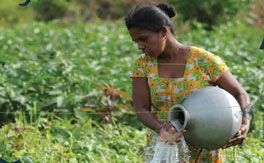Cambodia Country Strategic Plan (2019-2023)
<p>Cambodia has made great strides towards Sustainable Development Goal (SDG) 2 but needs to do more to achieve zero hunger by 2030. The Government’s mid-term and strategic review (MTSR)13 of the
<p>Cambodia has made great strides towards Sustainable Development Goal (SDG) 2 but needs to do more to achieve zero hunger by 2030. The Government’s mid-term and strategic review (MTSR)13 of the
A quarter of world’s forests are in mountain areas. These forests typically have high biodiversity, and provide many goods and services for people both in the mountains and the lowlands, often far away.
Mountains cover approximately one-quarter of the world’s surface and are home to 12 percent of the human population. By providing freshwater and other key environmental services to more than half of humanity,
The FAO-ILO Good practice guide for addressing child labour in fisheries and aquaculture: policy and practice aims at improving the understanding of the nature and scope, causes and contributing factors,
Meeting the food demand of a global population expected to reach 9.1 billion in 2050 and over 10 billion by the end of the century will require major changes in agricultural production systems. Improving
This Fisheries and Aquaculture Technical Paper presents case studies of the policy, governance and institutional issues of marine protected areas in Brazil, India, Palau and Senegal. It is the first of
The Global Bioenergy Partnership (GBEP) has a clearly defined mission: to promote the wider production and use of modern bioenergy, particularly in the developing world where traditional use of biomass
The objective of this report is to catalyse thinking about the ways in which agriculture – which has a vital role in global food security, development and natural resources use – can and must be fully
Marine fisheries are very important to the economy and well-being of coastal communities. Maintaining the long-term prosperity and sustainability of marine fisheries is not only of political and social
A new satellite-based survey released by the FAO provides a more accurate picture of changes in the world's forests, showing forest land use declined between 1990 and 2005. The findings of a global remote

<p><span id="itro1">FAO's first flagship publication on global status of land & water resources profiles the state of the natural resource base upon which world food production depends.</span></p>